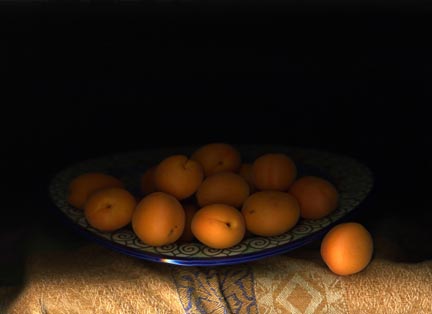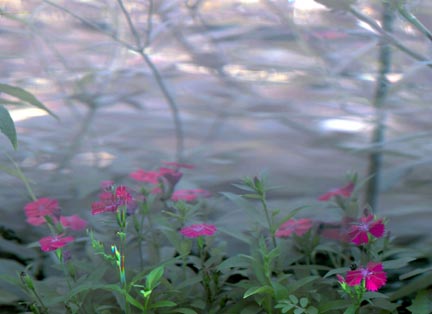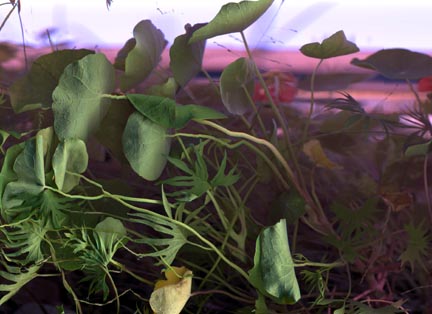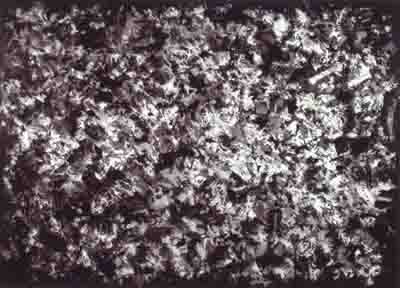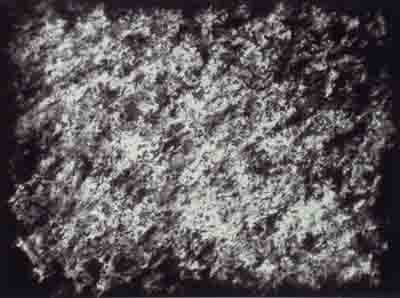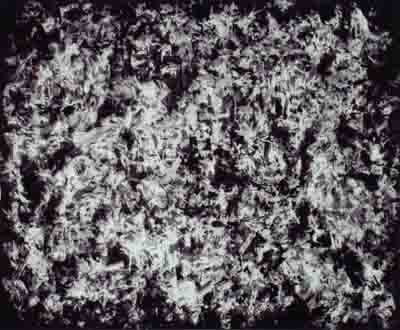Bruce Checefsky
(American, b.1957; resides in Cleveland, OH)
Bruce Checefsky’s recent series, Gardens, extends his pursuit of innovative, unconventional photographic techniques. Rather than finding the artist in the darkroom, where previously he created complex photograms, in this newest project Checefsky works out in his garden. To create the images in this series Checefsky brought a flat-bed scanner outside—mounted on a tripod, plugged into a laptop and powered by a lengthy extension cord—employing it as an impromptu field camera. In this case, instead of recording an image of an object placed on its glass surface, the scanner is aimed outwards at its surroundings and it registers a picture of the garden landscape or, in other instances, an arranged tableau of garden vegetables or fruits. If Checefsky effectively “scans” his garden, repurposing the scanner as a camera, the resulting photographs do not immediately convey the unusual means of their creation. These lushly colored images might initially appear to be traditional still lifes, botanical studies, or pastoral scenes, until one notices the occasional scanning glitch—a miniscule patch of neon color, a peculiar blur, or an unusual flatness in one part of an image—which hints at its origins.
Checefsky received his BS from Kutztown University of Pennsylvania and his MFA from Cranbrook Academy of Art. He is the writer and director of the short film Pharmacy, and he has had solo exhibitions Wexner Center for the Arts, Columbus, OH; Museum of Contemporary Art, Cleveland, Ohio; Institute of Contemporary Art, Sofia, Bulgaria; Galerie Tolgyfa, Budapest; Academie de Art, Bucahrest, Romania, and other venues. His films and photographs are held in many permanent collections, including the Museum of Modern Art, New York; Whitney Museum of American Art, New York; Minneapolis Institute of Art; Brooklyn Museum; Cleveland Art Museum; Fotomuseum Winterthur, Switzerland; and Institute of Contemporary Art, Bulgaria.
Past Portfolio
In his large, black-and-white photograms Checefsky creates densely layered patterns from small items like bugs and toy soldiers. The photogram process involves placing objects directly on light sensitive paper—rather than working with a negative and an enlarger—and making an exposure, after which any areas that were covered remain unexposed. Using multiple exposures, varying the direction and amount of light, Checefsky creates a pronounced sense of depth. The outlines of the objects he uses are individually identifiable from close-up, but from a greater distance the varied tonalities and overlapping shadows blend into a complex abstract plane.
